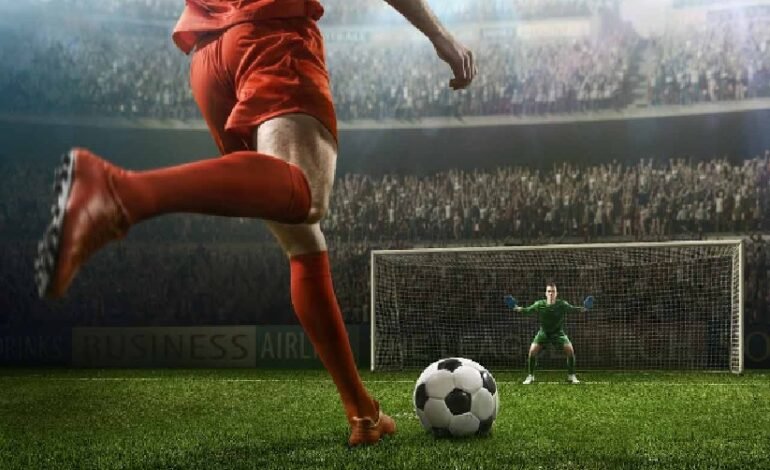Effective Treatment and Prevention Tips for Golfer’s Elbow: A Comprehensive Guide

“🏌️♂️ Get back in the game! Discover effective treatments and preventative tips for Golfer’s Elbow! Your ultimate guide to healing ⛳💪🏼”
Golfer’s Elbow, or medial epicondylitis, is a condition resulting from inflammation of the tendons attaching to the elbow’s inner bony area. Caused by repetitive wrist and forearm movements, it leads to pain and tenderness on the inner side of the elbow. Common in golfers but not limited to them, treatments involve rest, ice application, anti-inflammatory medications, stretching exercises, and possibly physical therapy for severe cases.
Understanding Golfer’s Elbow
A Golfer’s Elbow, or medial epicondylitis, results from overuse of the forearm muscles responsible for wrist and finger flexion. This condition causes pain and inflammation on the inner elbow and can extend along the arm. Activities like golfing or other repetitive motions aggravate it. Treatment typically involves rest, ice application, physical therapy exercises, and sometimes anti-inflammatory medications to relieve symptoms and promote healing.
Causes and symptom presentation
Causes of illnesses can vary widely, originating from infections, genetic factors, environmental influences, or lifestyle choices. Symptoms depend on the underlying condition but generally include pain, fatigue, fever, and abnormal body functions. Early detection is critical for effective management and may require medical imaging or laboratory tests. Understanding these causes and recognizing symptoms promptly can significantly improve treatment outcomes and overall health quality.
The populace most affected by the condition
The group most impacted by the situation comprises individuals who are directly exposed. These people bear the greatest extent of physical, emotional, and sometimes economic burdens due to their circumstances. Oftentimes overlooked or underserved, this segment necessitates particular attention from support services and interventions to mitigate adverse effects and improve outcomes for a positive long-term prognosis in facing these challenges head-on.
Proper Diagnosis
Early signs that may indicate a Golfer’s Elbow
Early signs can manifest as pain or tenderness on the inner side of the elbow. Individuals may also experience stiffness, weakness in the hands and wrists, and numbness or tingling radiating into the fingers. These symptoms often worsen with certain activities, such as gripping objects or flexing the wrist. Early detection and treatment are crucial to preventing further injury and ensuring effective recovery.
Medical examinations and diagnostic tests
Medical examinations and diagnostic tests are essential components of healthcare. They aid in detecting illnesses, understanding patient symptoms, and determining appropriate treatments. Through various screenings, labs, imaging studies, and physical assessments, doctors can accurately diagnose conditions early. Timely intervention based on these results often improves outcomes and supports effective management of diseases. Patients benefit significantly from comprehensive evaluations tailored to their unique health needs.
Importance of accurate diagnosis
Accurate diagnosis is crucial in medical practice because it underpins effective treatment plans and positive patient outcomes. Misdiagnosis can lead to inappropriate treatments, prolonged illness, and unnecessary healthcare costs. Precise identification of a condition ensures that patients receive the correct interventions promptly, boosting their chances for recovery and enhancing their quality of life. Furthermore, accurate diagnostics are essential for advancing medical research and improving overall public health strategies.
Effective Treatment Techniques
Utilising the right equipment and techniques is crucial for ensuring safety, efficiency, and effectiveness in any task. Proper tools not only improve precision but also reduce the risks of injury, wear, and damage. Adequate training on proper technique enhances performance by minimising errors and prolonging equipment lifespan. Whether in sports or industry, appropriate gear combined with the correct methods leads to optimal results and long-term success.
Regular strength and flexibility exercises are pivotal for overall fitness. Strength training improves muscle tone, enhances endurance, and promotes better posture. Flexibility exercises increase the range of motion, reduce injury risk, and alleviate muscular tension. Incorporating both into a routine supports bodily balance and functional movement. Together, they contribute to long-term health benefits by fostering resilience against physical strain while also enhancing daily performance and well-being.
Regular breaks are essential to prevent strain and overuse of the elbow. Consistently working without rest can lead to injury or chronic pain in the joint. Incorporating short, frequent pauses into activities helps maintain elbow health and overall productivity. Proper care and attention to body signals ensure long-term limb functionality, reducing risks associated with repetitive movements, such as tendonitis or cubital tunnel syndrome.
Role of a Healthy Lifestyle in Prevention and Recovery
Nutritional needs for muscle recovery
For effective muscle recovery, your body demands specific nutrients. Protein is crucial, as it rebuilds and repairs damaged tissues. Carbohydrates replenish glycogen stores depleted during exercise, providing essential energy for future workouts. Healthy fats support overall cellular functions and reduce inflammation, aiding recovery. Additionally, vitamins and minerals like vitamin C and magnesium play vital roles in healing processes by boosting immunity and enhancing muscular repair mechanisms.
Adequate hydration
Ensuring proper hydration is essential for maintaining overall health. Consuming enough fluids helps regulate body temperature, supports digestion, and enables better nutrient absorption. Very few realise that even mild dehydration can lead to fatigue and cognitive impairments. To stay adequately hydrated, individuals are encouraged to drink water routinely throughout the day and pay attention to signs of thirst or dehydration, especially during physical activities or in hot environments.
Importance of good sleep and stress management
Getting sufficient sleep and managing stress is vital for overall well-being. Quality rest rejuvenates the body, enhances cognitive functions, and strengthens immunity. Effective stress management reduces anxiety levels, improves mental health, and prevents chronic diseases. Prioritizing these aspects fosters better emotional stability, productivity, and life satisfaction. Incorporating healthy habits like regular exercise, mindful relaxation techniques, and maintaining a balanced lifestyle can significantly improve sleep quality and reduce stress.
FAQs
How do you fix a golfer’s elbow?
To address the golfer’s elbow, rest the affected arm and avoid activities that exacerbate pain. Apply ice packs to reduce inflammation and consider using a brace for support. Gentle stretching and strengthening exercises can be beneficial once acute symptoms subside. Nonsteroidal anti-inflammatory drugs (NSAIDs) may help alleviate pain. In persistent cases, seek medical advice for possible corticosteroid injections or physical therapy interventions to enhance recovery.
What is the main cause of golf elbow?
Golf elbow, or medial epicondylitis, primarily stems from overuse and repetitive stress on the tendons attached to the forearm muscles, which control wrist and finger movements. Frequently engaging in activities like golfing, throwing sports, or even some manual labour jobs can exacerbate these motions. The continuous strain leads to tiny tears in the tendons, resulting in inflammation and pain localized around the inner elbow area.
Does the golfer’s elbow go away?
Golfers’ elbow, characterized by pain and inflammation on the inside of the elbow, can often improve with proper treatment. Rest is crucial to allow healing, paired with physical therapy exercises to strengthen muscles and prevent recurrence. Applying ice and taking anti-inflammatory medications may also help reduce symptoms. While many people recover fully over time, severe or persistent cases might need professional medical attention for effective resolution.
What can be mistaken for a golfer’s elbow?
Several conditions can be mistaken for golfer’s elbow due to similar symptoms. Tennis elbow, carpal tunnel syndrome, and arthritis are notable examples. These conditions also cause pain and discomfort in the arm or elbow region. Additionally, nerve compression issues such as cubital tunnel syndrome may mimic golfer’s symptoms. Accurate diagnosis through medical evaluation is essential to distinguish between these ailments and provide proper treatment strategies.












